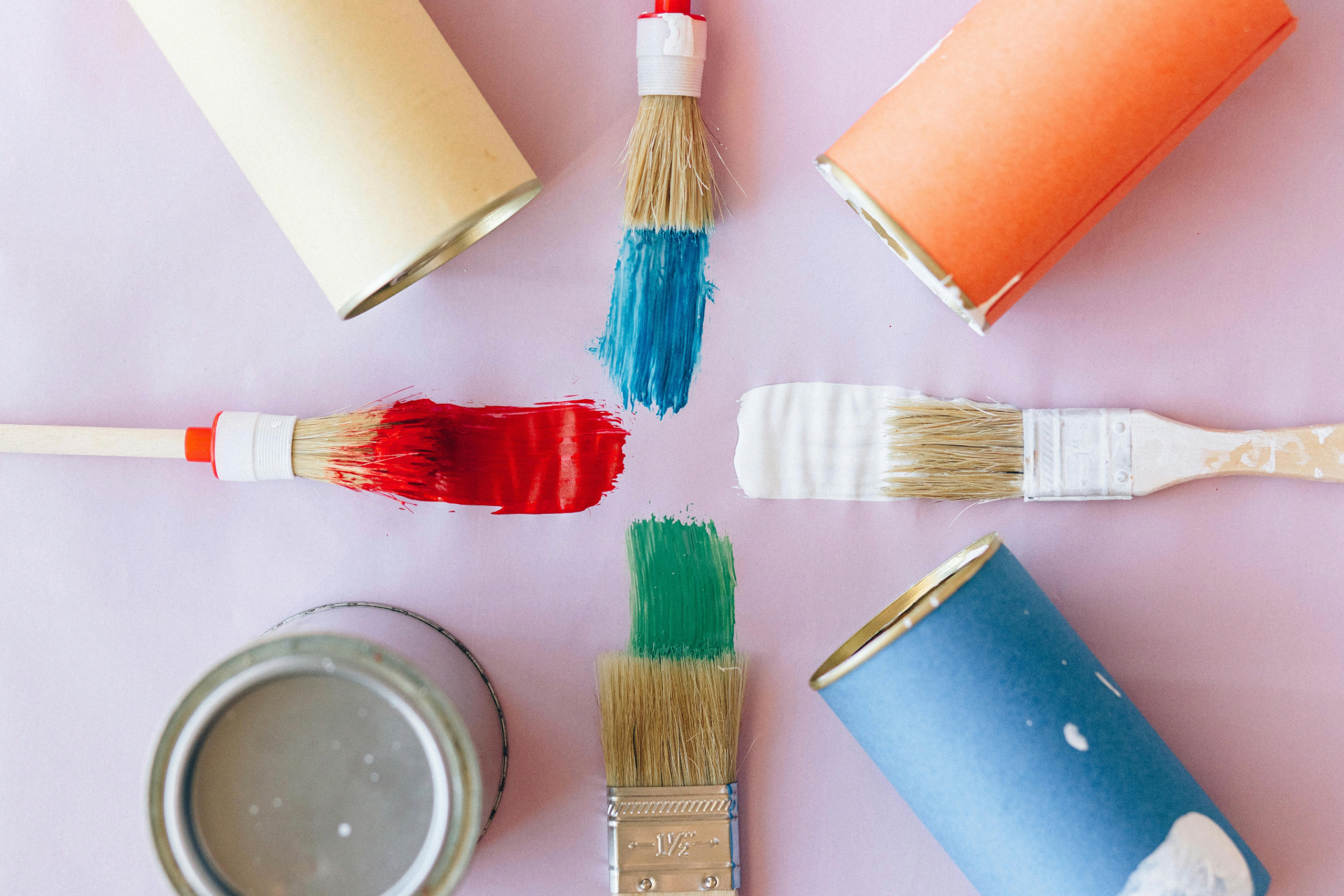
Using Color Theory while selecting colors for a Room
Choosing the right colors for a room can significantly impact its mood and functionality. Understanding color theory can help you make informed decisions that enhance the aesthetics of your space. Here’s a guide on how to apply color theory when selecting colors for your next interior design project.
1. Understand the Color Wheel
The color wheel is a fundamental tool in color theory, illustrating the relationships between different colors. It consists of primary, secondary, and tertiary colors:
- Primary Colors: Red, blue, and yellow. These colors cannot be created by mixing other colors.
- Secondary Colors: Green, orange, and purple, formed by mixing primary colors.
- Tertiary Colors: Created by mixing a primary color with a secondary color (e.g., red-orange).
Understanding the color wheel helps you visualize how colors interact with one another.
2. Learn About Color Schemes
Color schemes are combinations of colors that work well together. Here are some popular schemes based on color theory:
- Complementary Colors: Colors that are opposite each other on the color wheel (e.g., blue and orange). This scheme creates high contrast and vibrant looks.
- Analogous Colors: Colors that are next to each other on the color wheel (e.g., blue, blue-green, and green). This scheme provides harmony and is visually pleasing.
- Triadic Colors: A scheme using three colors that are evenly spaced on the color wheel (e.g., red, blue, and yellow). This offers a balanced yet dynamic palette.
- Monochromatic Colors: Variations of a single color (e.g., light blue, medium blue, and dark blue). This creates a cohesive and serene look.
3. Consider Color Psychology
Colors evoke emotions and can influence the atmosphere of a room. Here’s a brief overview of how different colors are perceived:
- Warm Colors: Reds, oranges, and yellows. These colors are energizing and can create a sense of warmth and excitement, making them suitable for social spaces like living rooms or kitchens.
- Cool Colors: Blues, greens, and purples. These colors promote calmness and relaxation, making them ideal for bedrooms or bathrooms.
- Neutrals: Whites, grays, and beiges. These colors provide a versatile backdrop that can complement any style and are often used to create balance in a space.
4. Think About Lighting
Lighting can significantly affect how colors appear in a room. Natural light, incandescent bulbs, and LED lights each render colors differently. Consider the following:
- Natural Light: Colors may appear more vibrant in natural light, while darker shades can look muted.
- Artificial Light: The type of bulb can alter the color temperature. Warm bulbs can enhance yellows and reds, while cool bulbs can emphasize blues and greens.
Always test paint samples in your space at different times of the day to see how they change under various lighting conditions.
5. Create a Focal Point
When selecting colors, consider creating a focal point in the room. This can be achieved by using a bold color on an accent wall, choosing striking furniture, or incorporating colorful artwork. A well-defined focal point draws the eye and adds depth to the overall design.
6. Test with Samples
Before committing to a color, always test samples in your space. Paint small sections of the wall or use color swatches to see how they look in your room. Observe how the colors interact with your furniture, decor, and lighting throughout the day.
7. Stay True to Your Style
Ultimately, your color choices should reflect your personal style and preferences. Use color theory as a guide, but trust your instincts. Consider the overall mood you want to create and select colors that resonate with you.
Conclusion
Using color theory to select colors for a room can transform your space and enhance its overall ambiance. By understanding the color wheel, exploring color schemes, and considering psychology and lighting, you can create a harmonious and inviting environment. If you need assistance in choosing the perfect colors for your home, contact Spacia Interiors today, and let us help you bring your vision to life!
Simple gallery
I want to create beautiful things, even if it’s not necessary for anyone, as a fight against ugly things. This is my intention.


Fast, cheap and good — from these three things you should always choose two. If it’s fast and cheap, it will never be good. If it’s cheap and good, it will never work out quickly. And if it is good and fast, it will never come cheap. But remember: of the three you still have to always choose two.
